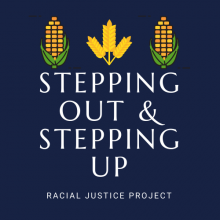
An article authored by Stephen M. Gavazzi entitled "The Original Sin of Our Nation's First Public Universities" was first published by Forbes on April 20, 2020. The contents of this article can be viewed on this page as well.
The Original Sin of Our Nation's First Public Universities
America's first public universities came into existence with the Morrill Land-Grant Act, signed into law by President Abraham Lincoln in 1862. Named after its main sponsor, Vermont Senator Justin Morrill, this congressional action provided each state with parcels of land that could be used or sold off to build an institution of higher learning.
Fast forward 150 years, and we see that the Morrill Land-Grant Act created some of the world's finest public universities. They include such prominent names as Cornell, Maryland, Michigan State, MIT, Ohio State, Penn State, Texas A&M, Wisconsin, and the University of California, all designed to bring science, technology, agriculture, and the arts to the American people.
The three-part mission of the modern land-grant university – to teach, to conduct research, and to provide direct services to communities – indeed is a noble undertaking. However, a recent exposé published by High Country News provided our nation with some stark reminders that the Morrill Act was not quite as virtuous as it seemed. Remember those parcels of land that were granted to state governments? They were portions of territories taken from Native American tribes, typically by brute force or lopsided treaties.
The High Country News counted almost 11 million acres of land that were seized from approximately 250 tribes. And because the original Morrill Act stipulated that the money raised from the land had to be used in perpetuity, the funds remain on university ledgers to this day. Perhaps even more shocking is the fact that these parcels had a current estimated worth of approximately half a billion dollars when adjusted for inflation. Reflecting on this information, the reporters hung the label “land-grab” on these universities, and they described the indigenous people and the territories taken from them as "an inconvenient truth."
Recognition of the coercive and often violent activities underlying the creation of the land-grant universities over a century and a half ago certainly is challenging. There are many issues and concerns, including questions about what should be done to make amends. There are some significant parallels in terms of the national dialogue that has been taking place regarding slavery, often described as America's "original sin." Two concepts at the core of this conversation include contrition – a call for remorse and apology – and reparations – an appeal for compensation. While the incredible moral failing of Article 1 of the original United States Constitution is self-evident in terms of its support of slavery, it is less obvious exactly who should be on the receiving end of an apology (let alone who should receive reparations).
The "original sin" of land-grant universities, on the other hand, does not suffer from this same problem. The amount and location of the land that was taken is known, and the tribes from whom this territory was stripped are identifiable. The documentation provided by the High Country News report should serve as grounds for swift acts of contrition from the leaders of every land-grant university. Thankfully, growing numbers of universities such as Colorado State University and the University of Minnesota already have taken this step, often through official acknowledgement of the tribes affected by the land seizures that supported their university's foundation.
Unfortunately, reparations are slower in coming from land-grant universities. One notable exception to this inaction, however, has been the work undertaken by Barry Dunn, president of South Dakota State University. He and his colleagues have created the Wokini Initiative, self-described as a "collaborative and holistic framework to support American Indian student success and Indigenous Nation-building." The word "Wokini" means "new life" in the language of the Lakota and Dakota tribes who were indigenous to the land on which South Dakota is situated. As such, the Wokini Initiative is designed to give back to the Native American people living in the state the total estimated $600,000 annual income gleaned from the 160,000 acres originally given to the university. These reparations take the form of scholarships and programs aimed to support tribal members as university students, as well as financing for an American Indian Student Center.
Will other land-grant universities commit similar amounts of resources to the indigenous peoples impacted by dispossession? In response to the High Country News report, the Association of Public and Land-Grant Universities (APLU) provided the following written response: "Unquestionably, the history of land-grant universities intersects with that of Native Americans and the taking of their lands. While we cannot change the past, land-grant universities have and will continue to be focused on building a better future for everyone" (emphasis added). This same organization invited President Dunn to give the keynote lecture on his work for this past year's APLU conference. Perhaps the Wokini Initiative will help illuminate a path for land-grant universities, whose leaders can build a better future for Native Americans through actions that reflect both atonement and penance.
